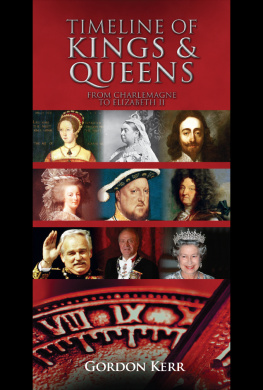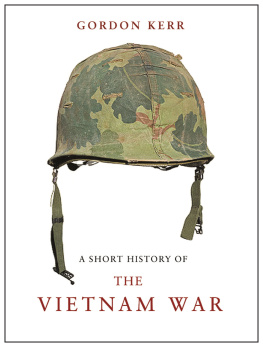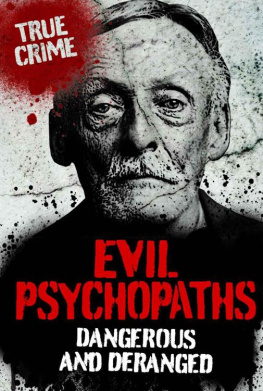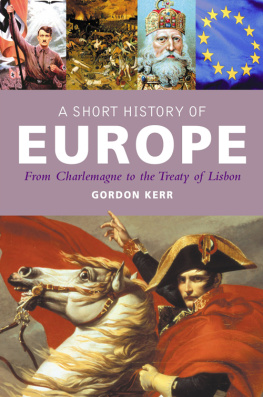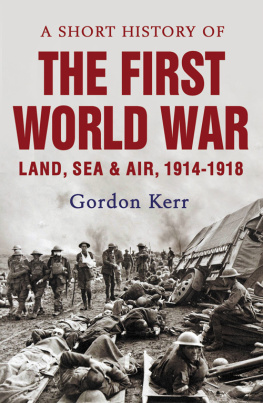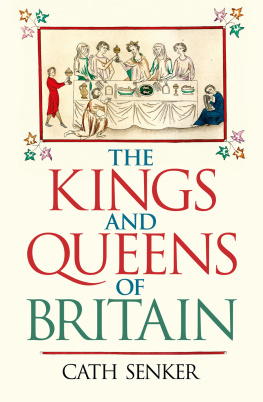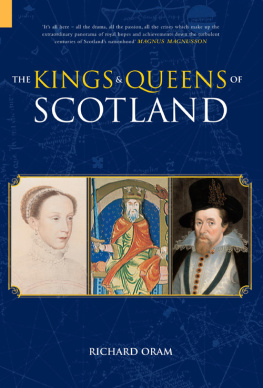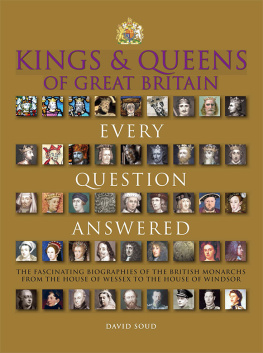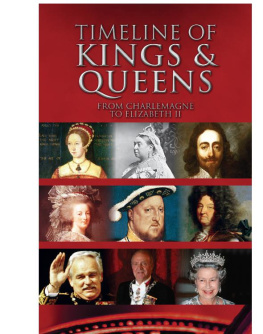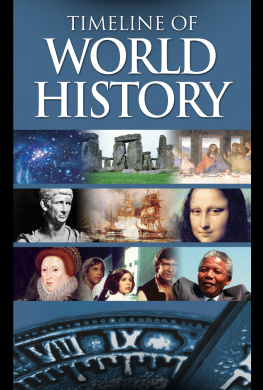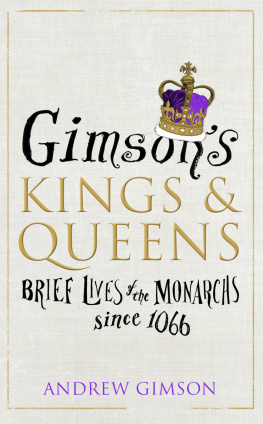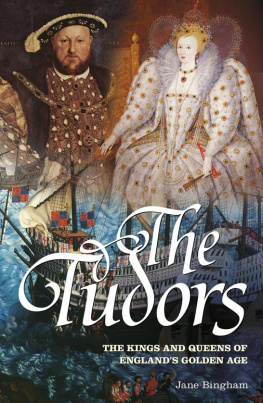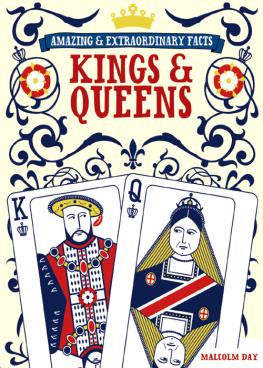Gordon Kerr - Timeline of Kings and Queens
Here you can read online Gordon Kerr - Timeline of Kings and Queens full text of the book (entire story) in english for free. Download pdf and epub, get meaning, cover and reviews about this ebook. year: 2011, genre: Children. Description of the work, (preface) as well as reviews are available. Best literature library LitArk.com created for fans of good reading and offers a wide selection of genres:
Romance novel
Science fiction
Adventure
Detective
Science
History
Home and family
Prose
Art
Politics
Computer
Non-fiction
Religion
Business
Children
Humor
Choose a favorite category and find really read worthwhile books. Enjoy immersion in the world of imagination, feel the emotions of the characters or learn something new for yourself, make an fascinating discovery.
- Book:Timeline of Kings and Queens
- Author:
- Genre:
- Year:2011
- Rating:4 / 5
- Favourites:Add to favourites
- Your mark:
- 80
- 1
- 2
- 3
- 4
- 5
Timeline of Kings and Queens: summary, description and annotation
We offer to read an annotation, description, summary or preface (depends on what the author of the book "Timeline of Kings and Queens" wrote himself). If you haven't found the necessary information about the book — write in the comments, we will try to find it.
Timeline of Kings and Queens — read online for free the complete book (whole text) full work
Below is the text of the book, divided by pages. System saving the place of the last page read, allows you to conveniently read the book "Timeline of Kings and Queens" online for free, without having to search again every time where you left off. Put a bookmark, and you can go to the page where you finished reading at any time.
Font size:
Interval:
Bookmark:
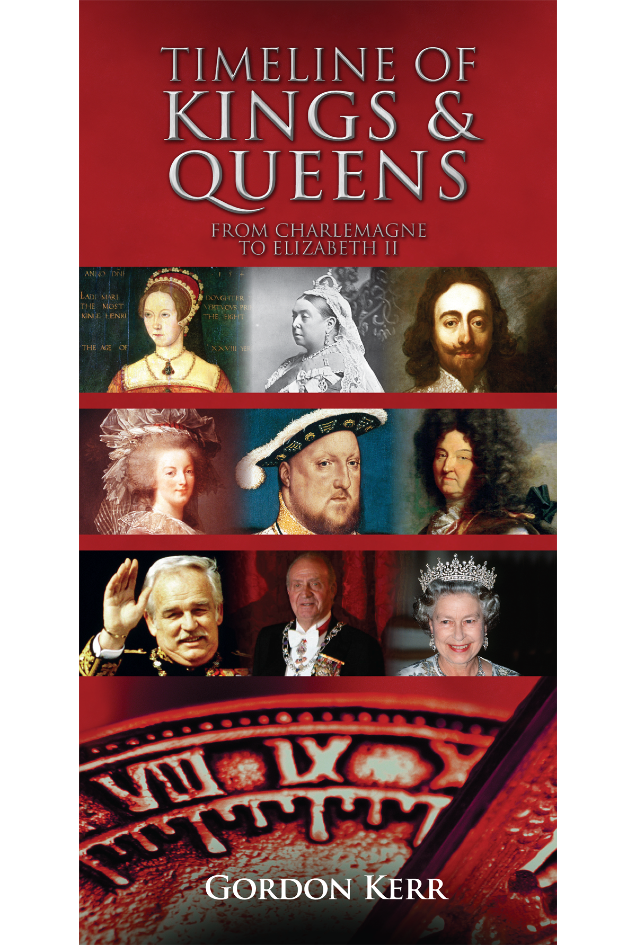
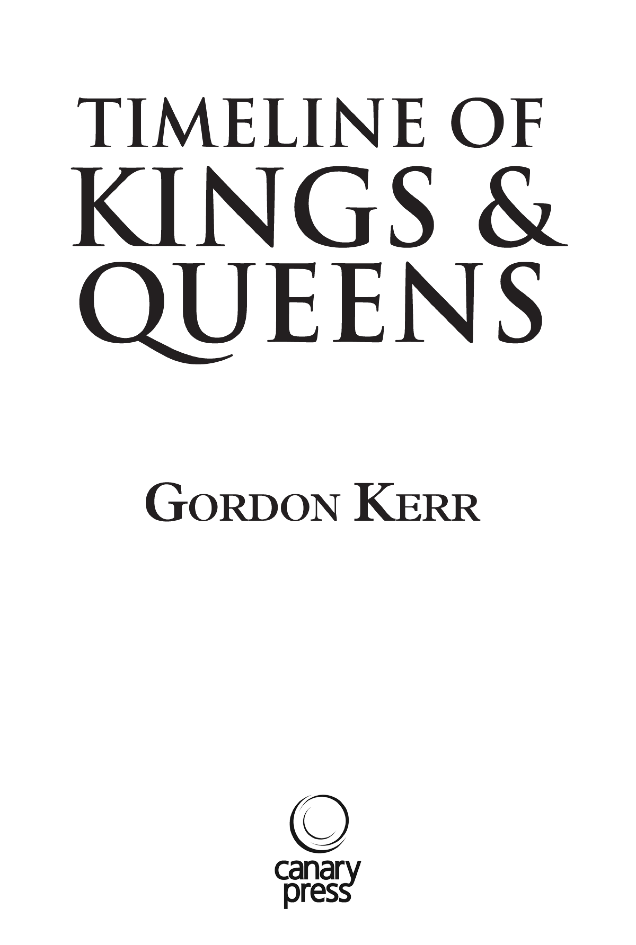
More titles by Canary Press

True Crime
Serial Killers
Born to be Killers
Fiendish Killers
Criminal Masterminds
Houses of Death
Dead Men Walking
Evil Cult Killers
Cannibals
Executioners
Terror Attacks
Assassinations and Conspiracies
Evil Psychopaths
Great Unsolved Crimes
Infamous Scandals
Killers In Cold Blood
Professional Killers
The World's Most Evil People
War Crimes & Atrocities
Popular History
People Who Changed the World
Vampires
Pirates and Privateers
Zombies
Timeline Series
Timeline of World History
Timeline of Britain
Timeline of Kings and Queens
Timeline of War

8001399
14001599
16001799
18001918
1919Present Day

The first art of a monarch is the power to endure hatred.
Seneca, Roman Philosopher 1st century CE
Even royal families themselves agree that the concept of monarchy is a curious one. The word itself has no clear definition. It can mean different things in different countries, and a monarch's job description also changes over time, depending on the changing will of their subjects. In some places the king or queen wields unlimited political power, and in others, they do little more than appear on postage stamps.
Today 'absolute' monarchy where a sole ruler has complete control over the populace, regardless of any written constitution or elected parliament tends to be associated with tyrannical and less progressive societies. However, there was a time when Europeans generally believed that their rulers had been chosen by God, and nurtured a direct relationship with the divine. In the eyes of the people this gave them a right to rule their subjects with an iron fist. The appalling acts of Vlad the Impaler and Ivan the Terrible are famous examples, while Henry VIII was so convinced of his ordination by God, that he was willing to renounce the pope and reject his own children in order to reinforce his position as head of the brand new Church of England.
The French revolution, and the ideological changes of the Enlightenment, as well as the rise of secularism, helped put an end to this kind of thinking in Europe, and as a result, 'constitutional', or limited monarchy has become the most prevalent form of European monarchy. Belgium, Denmark, Netherlands, Norway, Spain, Sweden and the United Kingdom have a parliamentary system the head of which is a prime minister, or a president. The king or queen is the 'head of state', thus echoing the ideas of Napoleon Bonaparte, the first man to proclaim himself as the embodiment of a nation rather than as its divinely appointed ruler.
The history of Europe can be characterised, and categorised, by the personalities and actions of the ruling monarchs of the time. Rich, powerful, influential, sometimes murderous, inbred or just plain insane these eccentric individuals give European history colour, not to mention some much needed glamour and intrigue. This book explores the lives of some of the most influential men and women who have ever lived, and through the timeline, shows the fascinating connections between the royal houses of Europe.
8001399

Holy Roman Empire Pope Leo IIIs coronation of Charles I the Great (Charlemagne), king of the Franks, founding father of both the French and German monarchies, as Imperator Romanorum (Emperor of the Romans), in St Peters church, Rome, marks the beginning of the Holy Roman Empire.
England Egbert, driven into exile by Offa of Mercia, returns from Charlemagnes court to become king of Wessex; he maintains the independence of Wessex against Mercia. Bulgaria Around this time, Krum becomes khan and embarks upon expansion of his territory. Byzantine Empire Finance minister Nikephoros I deposes and exiles Empress Irene to become emperor; he reorganizes the empire.
Denmark Godfred becomes king. Venice Giovanni Galbaio, according to tradition, the eighth doge chief magistrate and leader of the Most Serene Republic of Venice flees, with his family, to Mantua, in the face of opposition from the pro-Frankish Obelerio degli Antenori, who becomes doge; he accepts Frankish protection and war with Byzantium ensues.
Denmark King Godfred is murdered by a servant; his nephew, Hemming, becomes king. Italy Pepin, son of Charlemagne and king of the Frankish Kingdom of Italy (north Italy), dies; his son, Bernard, succeeds him.
Venice Obelerio degli Antenori goes into exile in Constantinople; Agnello Participazio becomes doge, and during his reign he reclaims land and refortifies the city; the Venice we know today emerges, a city of canals centred on the Rialto. Bulgaria Khan Krum defeats the Byzantines and kills Emperor Nikephoros I. Byzantine Empire On the death of Nikephoros, Staurakios I, who has been co-emperor with his father, becomes emperor, but abdicates in favour of his brother, Michael I Rangabe, another co-ruler since 803.
Denmark On the death of King Hemming, Sigfred and Anulo dispute the crown; Anulo dies in battle; the throne is fought over until the 10th century, when Denmark is unified.
Holy Roman Empire Louis the Pious is crowned co-emperor of the Franks with his father, Charlemagne. Byzantine Empire Michael I Rangabe is heavily defeated by the Bulgarians and abdicates in favour of the general, Leo V the Armenian; Michael II the Amorian becomes emperor.
Holy Roman Empire The death of Charlemagne; Louis the Pious succeeds him as Holy Roman Emperor and king of the Franks. Bulgaria On the death of Krum, Omurtag becomes ruler and concludes a 30-year peace treaty with the Byzantine Empire.
Rome Stephen IV is elected pope.
Bavaria Holy Roman Emperor Louis the German becomes king. Rome Paschal I is elected pope; he tries to curb the increasing power of the Roman nobility.
Italy Holy Roman Emperor Louis the Pious makes King Bernard of Italy a vassal of his cousin, Louis son, Lothair; Bernard plots against him and is discovered and blinded, as a result of which he dies; Lothair becomes king of Italy.
Byzantine Empire Supporters of Michael II the Stammerer, assassinate Emperor Leo V during Christmas mass in Hagia Sophia, to become the first emperor of the Phrygian dynasty; his direct descendants will rule the Byzantine Empire for more than 200 years.
Rome Eugene II is elected pope. Holy Roman Empire The nine articles of the Constitutio Romana establish the authority of the Holy Roman Emperors in Rome, advancing imperial pretensions there. Pamplona igo Arista revolts against the Franks and establishes the Kingdom of Navarre.
England Egbert defeats Beornwulf of Mercia at the battle of Ellendun, and takes control of the Mercian dependencies in south-eastern England; Kent, Surrey, Sussex, East Anglia and Essex submit to Wessex.
Font size:
Interval:
Bookmark:
Similar books «Timeline of Kings and Queens»
Look at similar books to Timeline of Kings and Queens. We have selected literature similar in name and meaning in the hope of providing readers with more options to find new, interesting, not yet read works.
Discussion, reviews of the book Timeline of Kings and Queens and just readers' own opinions. Leave your comments, write what you think about the work, its meaning or the main characters. Specify what exactly you liked and what you didn't like, and why you think so.

